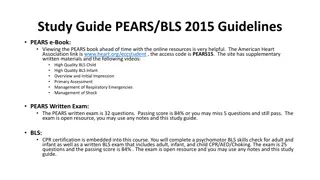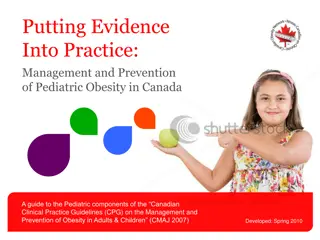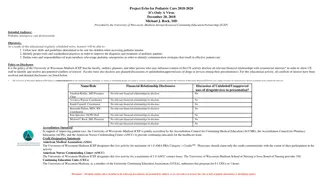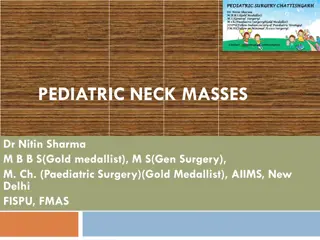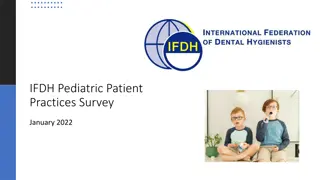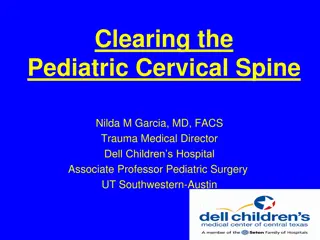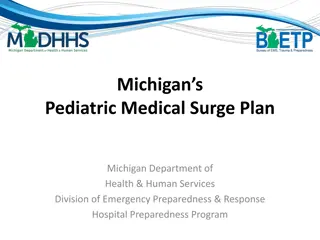Pediatric Limp: Causes, Clues & Emergency Evaluation on 15/8/1392
A 2-year-old girl with a limp is brought to the emergency department. Learn about common causes like fractures, arthritis, and neurological issues. Explore emergency causes such as tumors, septic arthritis, and more. Discover major diagnostic clues from history, physical exams, and paraclinical evaluations.
Download Presentation

Please find below an Image/Link to download the presentation.
The content on the website is provided AS IS for your information and personal use only. It may not be sold, licensed, or shared on other websites without obtaining consent from the author.If you encounter any issues during the download, it is possible that the publisher has removed the file from their server.
You are allowed to download the files provided on this website for personal or commercial use, subject to the condition that they are used lawfully. All files are the property of their respective owners.
The content on the website is provided AS IS for your information and personal use only. It may not be sold, licensed, or shared on other websites without obtaining consent from the author.
E N D
Presentation Transcript
Dr Sayed nasser Mostafavi 15/8/1392 2
Case 1 A 2 year old girl brought to emergency department with chief complaint of inability to walking and standing. What's the common causes? What's the emergency causes? What's the major clues in history, physical examination, and para clinic evaluations? 15/8/1392 3
Common causes of limp in children Painful limp(short stance phase on the affected limb, point tenderness, normal neurologic exam): Bone: fracture, osteomyelitis, tumors Joints: septic arthritis, toxic synovitis of hip, brucellosis, serum sickness, henoch-schoenline purpura, acute rheumatic fever Muscles: trauma, viral myositis Non-painful limp(Toe-to-heel sequence of gait): guilain barre syndrom, transverse myelitis 15/8/1392 4
Emergency causes of limp in children Painful limp: Bone: fracture, osteomyelitis, tumors, cycle cell crisis, Joints: septic arthritis, brucellosis, serum sickness, Henoch-Schonlein purpura, acute rheumatic fever, acute rheumatic fever, Hemarthrosis, Slipped capital femoral epiphysis, Legg-Calv -Perthes disease Intra-abdominal: Appendicitis, psoas abscess, testicular torsion Non-painful limp: Neurological: Guillain-Barr Syndrome, transverse myelitis, botulism 15/8/1392 5
Major clues in diagnosis of acute limp 1 Clues Diagnosis Fracture, contusion, hemarthrosis History of trauma immediately before limp, X ray with or without local tenderness Fever, quite painful mono-arthritis, usually ESR Septic arthritis local bone tenderness + fever or ESR Osteomyelitis Tumors(Leukemia and neuroblastoma, bone tumors) Bone pain/ sometimes arthritis which wake the child from sleep, Hepatosplenomegaly, lymphadenopathy, cytopenia, ESR , prolonged fever Acute rheumatic fever Age 5-15 yr( 3-40), poly arthritis, heart murmur, jones criteria, ASO, ESR 15/8/1392 6
Major clues in diagnosis of acute limp 2 Clues Diagnosis Henoch-Sch nlein purpura Age 3-10 yr, palpable purpura, colicky abdominal pain, hematuria, proteinuria), large joint arthritis Serum sickness-like illness 8-12 days after drug ingestion, large joint arthritis, urticaria or morbiliform rashes, fever Brucellosis consumption of unpasturized milk, splenomegaly, fever, large joint and sacroiliac arthritis, positive wright test, Slipped capital femoral epiphysis Age 8-15 yr, overweight boys, Mostly chronic sometimes acute severe hip pain, Increasing pain with activity, specific by X ray Legg-Calv -Perthes disease Age 3-12 yr, male sex, Insidious onset, recurrent painless hip pain, often NL initial x ray then fragmentation 15/8/1392 7
Toddlers fracture 15/8/1392 8
The Limping Child The Limping Child Slipped Capital Femoral Epiphysis 8 15/8/1392 9
The Limping Child The Limping Child Perthes Disease 10 15/8/1392 10
Major clues in diagnosis of acute limp 3 Clues Diagnosis Age 3-8 yr , Acute hip pain, Mild restriction of ROM, no or mild fever, NL or mild WBC and ESR, no or mild hip effusion, sometimes bilateral Transient synovitis of the hip Reactive arthritis Quite painful mono- or poly- arthritis, large joint, no or mild fever and leukocytosis, sometimes ESR, Viral myositis Muscle pain during influenza infection, severe calf pain, CPK and LDH, Viral arthritis Mild and transient arthritis or arthralgia during viral infection( rubella, 5th disease, varicella, Localized pain at the soles of the feet foreign bodies, plantar warts, or calluses from poorly fitting shoe 15/8/1392 11
Physical exam Observation of the gait, asking the child to run, hop on one leg and then the other, walk on his or her heels and then toes Through exam of the CNS, spine, peripheral nervous system, abdomen, external genitalia , hips, knees, ankle, and feet 15/8/1392 12
Major clues in diagnosis of acute limp 4 Diagnosis Clues Abdominal tenderness, rebound, guarding, or a positive psoas sign appendicitis Painful, swollen testicle and loss of the cremasteric reflex Testicular torsion Inability to standing, muscle tone, DTR guilain barre syndrom, transverse myelitis 15/8/1392 13
Para clinic evaluation Evaluation Indication X ray Usually all acute limp especially if trauma or localizing point Hip sonography and AP and frog leg views x ray Abnormal hip exam Joint fluid aspiration Monoarticular arthritis with fever Wright test Usually all arthritis in endemic areas CBC, ESR, CRP Usually all, Suspected infectious, malignancy, rheumatologic ECG, throat culture, ASO Suspected acute rheumatic fever 15/8/1392 14
Conclusion Limp can be created by many osseus, infectious, soft tissue, abdominal, and neurological diseases Limp can be caused by both benign and life- threatening conditions The cause of limp usually can be determined by obtaining a careful history and physical examination. Radiographic and laboratory studies often are necessary to confirm clinical suspicions but diagnostic procedures rarely are required. 15/8/1392 15
Conclusion Fever and history of trauma is two key factor in finding the cause of limping Most cases had benign and self limited conditions and can be followed by NSAIDS and follow up 15/8/1392 16
15/8/1392 17







